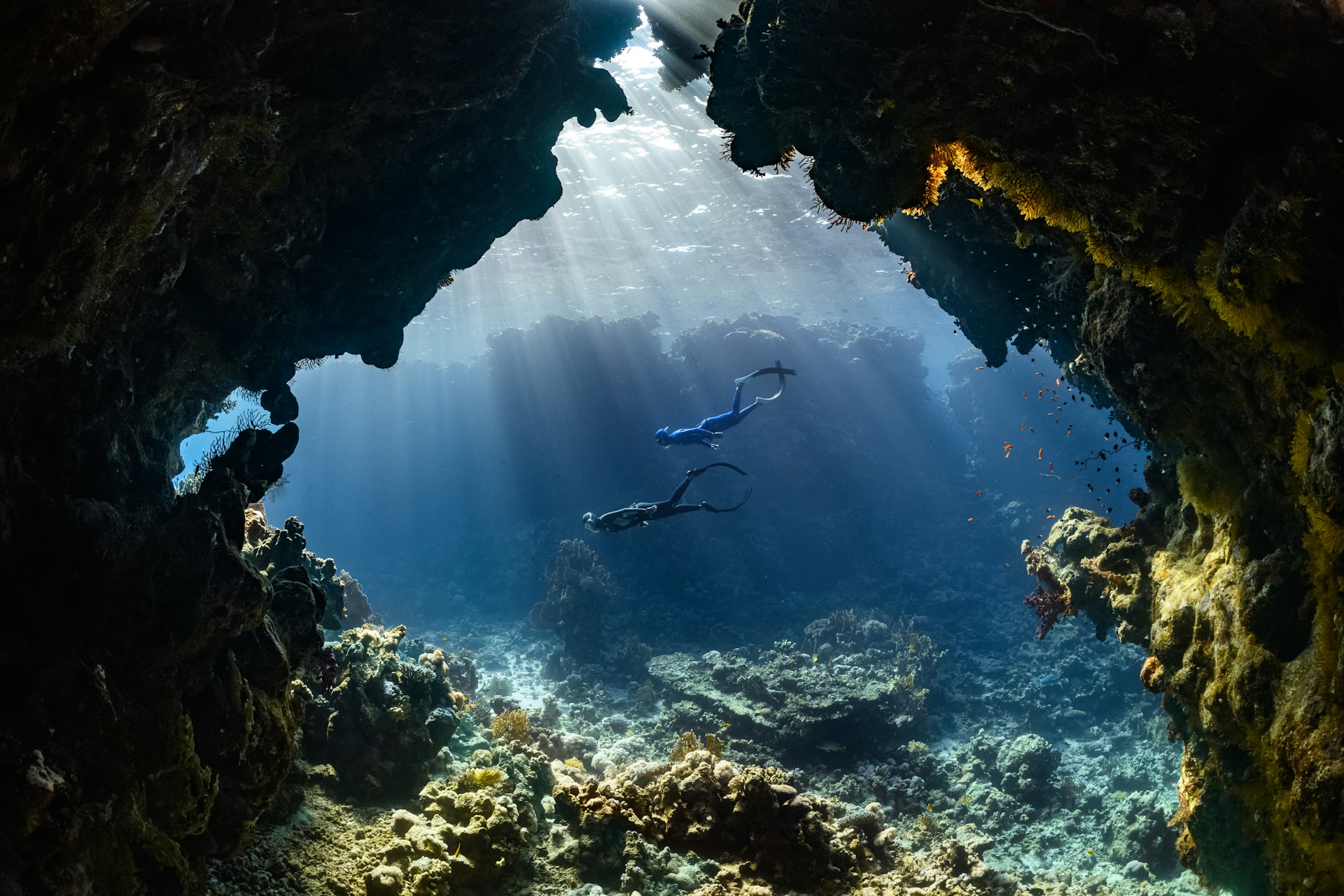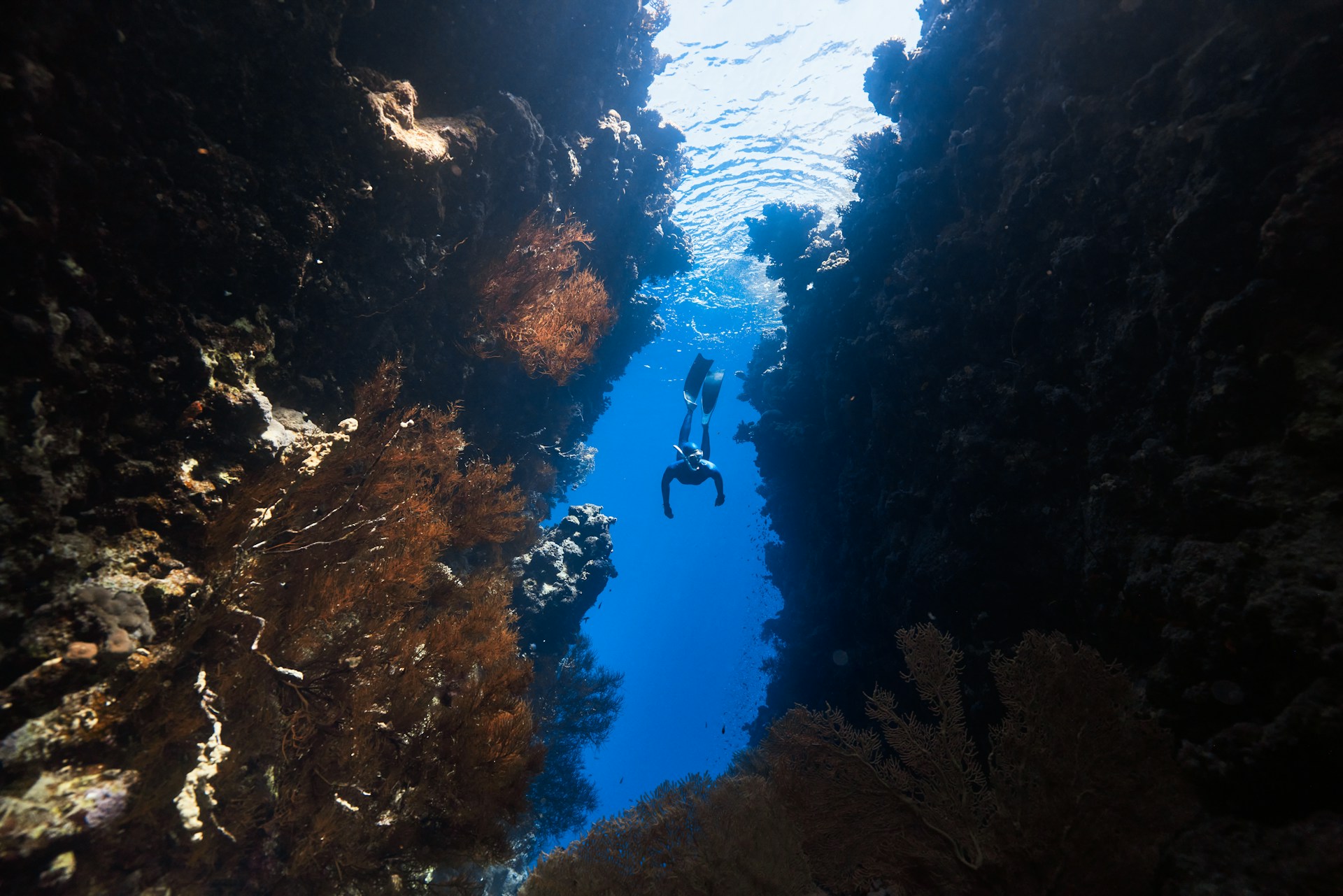Coral reefs are not only vital to the health of the world’s oceans but also play a significant role in stabilizing the global climate. Found along tropical coastlines from the Pacific and Caribbean to the Red Sea and Southeast Asia, they also thrive in unexpected places like southern Australia, off the coasts of Brazil and Japan, and even as cold-water reefs in the North Atlantic.
Given their importance and fragility, the question we must now ask is not whether we should visit coral reefs, but how to do so without causing harm. Respectful navigation and diving practices are not just possible—they are urgently needed.
Coral Reefs in Crisis
According to the Global Coral Reef Monitoring Network, more than 14% of the world’s coral reefs disappeared in less than ten years, mainly due to widespread coral bleaching—a direct result of rising ocean temperatures. However, local human activities are also a major threat. In popular tourist destinations such as the Maldives, the Philippines, Florida, and French Polynesia, damage is often caused by trampling, anchoring, sunscreen chemicals, and pollution from motorboats.
It’s important to remember that corals are living colonial animals, not dead rocks. They exist in a delicate symbiosis with microscopic algae called zooxanthellae, which help feed them. When corals are destroyed, the impact goes far beyond aesthetics—it endangers the entire marine food web.
Understanding and Following the Rules
Many coral reefs today are protected by specific environmental regulations, though the rules vary by country and location. These protections are designed to reduce human impact on marine biodiversity.
For instance, in the Mediterranean, anchoring is strictly forbidden on seagrass meadows such as those found in Port-Cros or the Bonifacio Strait. These seagrasses filter water, store carbon, and provide nurseries for marine species. In places like Saint-Barthélemy and Saint-Martin, anchoring is only allowed on eco-friendly buoys, and reef zones are closed to motorized vessels.
Larger-scale protections exist in countries like Australia (Great Barrier Reef), the U.S. (Florida Keys), and the Maldives. These areas enforce comprehensive management plans that include visitor quotas, drone and satellite surveillance, and regular inspections.
However, legislation alone isn’t enough. The key is voluntary compliance. Tourists, boaters, and divers must understand and embrace these guidelines for coral conservation to be truly effective.
Anchoring: A Hidden But Devastating Threat
One of the most underestimated dangers to coral reefs is improper anchoring. A single poorly placed anchor can destroy several square meters of coral in minutes. The anchor chain, in particular, acts like a wrecking ball when dragged across the seabed, especially during rough sea conditions.
To avoid such destruction, proper planning is essential. In busy tourist areas like Moorea, the Cayman Islands, and parts of Corsica, eco-designed mooring buoys are often available. These buoys are attached to permanent anchors placed outside sensitive zones, allowing boats to secure themselves without disturbing the seafloor.
Where no such buoys exist, it is critical to drop anchor only in sandy areas, clearly marked on nautical maps or detectable with sonar. Avoiding mixed seabeds that include coral, grass, and gravel is essential.
Research in Australia has shown that pleasure boats inflict 10 to 15 times more damage when anchoring freely compared to using ecological mooring systems. Some nations, like the Seychelles, enforce these rules strictly—fines for damaging marine habitats can reach up to €5,000.
The message is clear: anchoring must become a deliberate, informed, and environmentally conscious act.
A Call for Responsible Marine Tourism
As interest in marine tourism continues to grow, so does our responsibility to protect the ecosystems that make it possible. Coral reefs, though resilient in some ways, are being pushed to their limits. Whether sailing, diving, or snorkeling, we must adapt our practices to safeguard these vibrant underwater worlds.
By staying informed, respecting local regulations, and prioritizing reef-friendly techniques, visitors can enjoy the beauty of coral ecosystems while helping ensure they remain intact for generations to come.



